TWEAK-Fn14 Signaling Activates Myofibroblasts to Drive Progression of Fibrotic Kidney Disease
- PMID: 27026366
- PMCID: PMC5118488
- DOI: 10.1681/ASN.2015111227
TWEAK-Fn14 Signaling Activates Myofibroblasts to Drive Progression of Fibrotic Kidney Disease
Abstract
The identification of the cellular origins of myofibroblasts has led to the discovery of novel pathways that potentially drive myofibroblast perpetuation in disease. Here, we further investigated the role of innate immune signaling pathways in this process. In mice, renal injury-induced activation of pericytes, which are myofibroblast precursors attached to endothelial cells, led to upregulated expression of TNF receptor superfamily member 12a, also known as fibroblast growth factor-inducible 14 (Fn14), by these cells. In live rat kidney slices, administration of the Fn14 ligand, TNF-related weak inducer of apoptosis (TWEAK), promoted pericyte-dependent vasoconstriction followed by pericyte detachment from capillaries. In vitro, administration of TWEAK activated and differentiated pericytes into cytokine-producing myofibroblasts, and further activated established myofibroblasts in a manner requiring canonical and noncanonical NF-κB signaling pathways. Deficiency of Fn14 protected mouse kidneys from fibrogenesis, inflammation, and associated vascular instability after in vivo injury, and was associated with loss of NF-κB signaling. In a genetic model of spontaneous CKD, therapeutic delivery of anti-TWEAK blocking antibodies attenuated disease progression, preserved organ function, and increased survival. These results identify the TWEAK-Fn14 signaling pathway as an important factor in myofibroblast perpetuation, fibrogenesis, and chronic disease progression.
Keywords: Alport nephropathy; chronic; kidney disease; myofibroblast; pericyte; vascular biology.
Copyright © 2016 by the American Society of Nephrology.
Figures

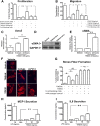
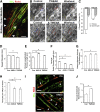

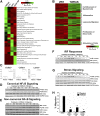
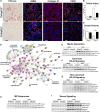
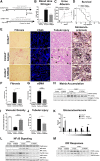

Comment in
- 3502–3504
References
-
- Lemos DR, Babaeijandaghi F, Low M, Chang CK, Lee ST, Fiore D, Zhang RH, Natarajan A, Nedospasov SA, Rossi FM: Nilotinib reduces muscle fibrosis in chronic muscle injury by promoting TNF-mediated apoptosis of fibro/adipogenic progenitors. Nat Med 21: 786–794, 2015 - PubMed
MeSH terms
Substances
Grants and funding
LinkOut - more resources
Full Text Sources
Other Literature Sources
Medical

